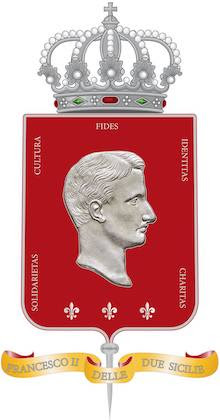I always enjoy seeing people take pride in their regional and Catholic heritage. So you can imagine how happy I was to spot the flag of Galicia outside Tomiño Taberna Gallega while walking along Grand Street, between Mulberry and Mott, in Little Italy, New York. (Heaven forbid any of the Italian businesses fly anything other than the geometric eyesore that is the Jacobin tricolore.)
While the current state flag was officially adopted in 1981, its design is based on the historic banner of the former Kingdom of Galicia. It features a white field with a diagonal sky blue band, overlaid with the royal coat of arms: a golden chalice bearing a silver Host on a royal blue shield, surrounded by seven crosses and topped with a crown.



















































